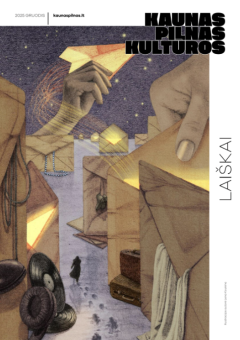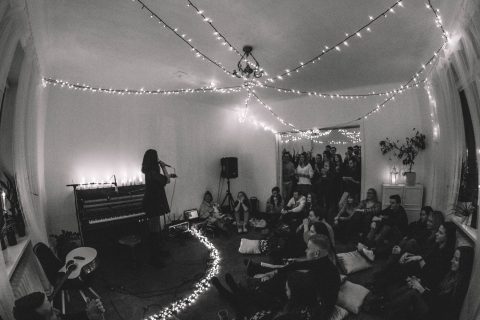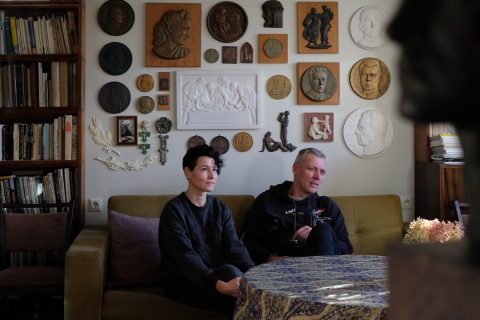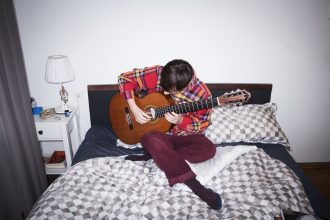Šančiai is one of the most interesting pieces of our city’s puzzle, with not only an insanely beautiful landscape, but also a distinct identity. A tiny unofficial republic, surrounded by a bend in the river and increasingly likened to the capital’s Užupis. Some say that the community of Žemieji Šančiai may even be Lithuania’s most active urban community. We go uphill from Žemieji Šančiai, to visit the active culprit of this phenomenon, Lithuanian music legend Gediminas Zujus.
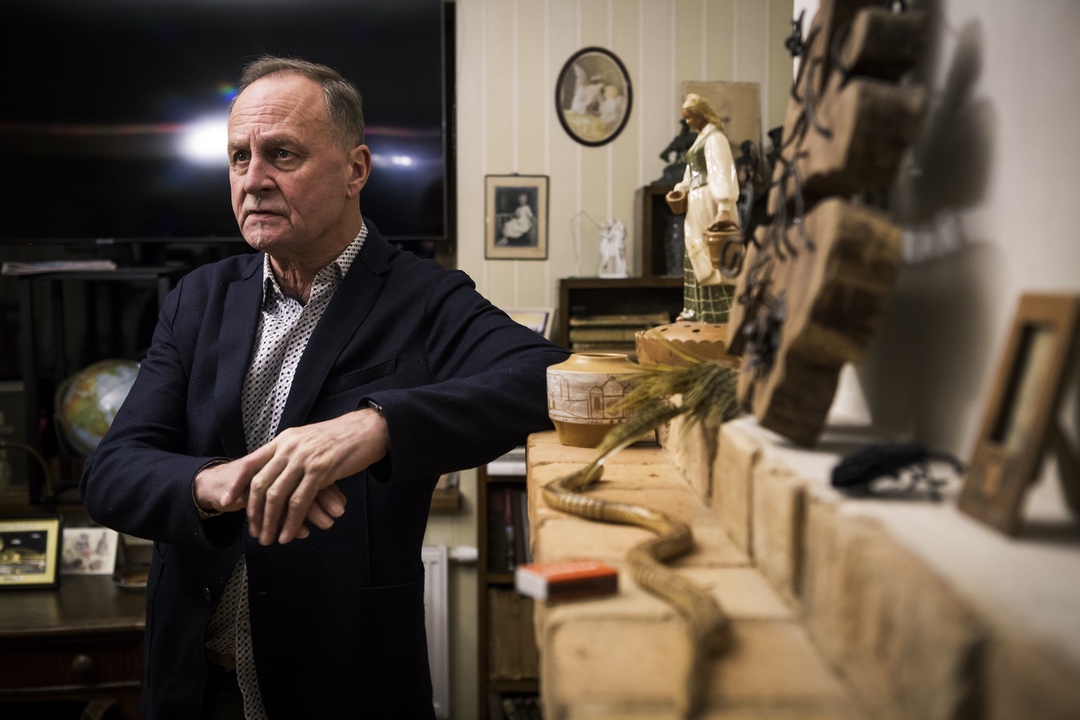
I still vividly remember Juozapavičiaus Avenue after the restoration of independence: an abandoned military complex, traces of paratroopers, collapsed roofs, rampant crime, the order of kamuoliniai gang, impenetrable riverbanks, circus bears kept on buses, and so on. Now it is home to hi-tech companies, the best-rated kindergartens and private schools, exclusive apartment blocks, and the fastest development in the city. However, one thing remains stable: the fourth generation of our interviewee’s family is still warmly settled in the same wooden house, now nearly surrounded by the ever-growing city.
Around the world and back to Šančiai
Donatas and I are greeted by our interviewee’s cousin – Gediminas is running late, but it’s completely understandable. He managed to squeeze in time for the conversation right after returning from a trip not only from Vilnius but also from another corner of the world, where he has been engaged in important educational work promoting Lithuanian culture.
“On the first day of October, I found out that I would be in Australia in November, followed by Singapore, Malaysia and then New Zealand. Quite an autumn. There was also Dubai, the Emirates, and London. Wow! And here I am now, just landed and rushed straight over, though I still had to submit reports on the way,” Gediminas Zujus tells us about the incredible pace of life, not yet having had time to make himself a coffee.
And this has been going on for decades. Gediminas established contact with foreign Lithuanians in 1989 and since then he has been actively supporting Lithuanian identity all over the world, organizing various activities for foreign Lithuanian communities. As he says, it all started with his uncle in Toronto, “His eyes were big, full of desire, warmth, love. And I made a cassette about Lithuania there, and we distributed it. It was a very big thing there at the time. And I even made some money from that tape, I was able to buy my first foreign instrument.”
Between Vilnius, the world, and Kaunas
I attempt to ask a question: who are you? Producer, pianist, sound engineer, arranger, teacher, event organizer? The host smiles as he admits to us, “Well, I’ve forgotten how much I used to do.” The press has already called him a musical Mohican. And with good reason.
I know that, in addition to his various production activities, Gediminas has been working for a couple of decades in several educational institutions in Vilnius: The Lithuanian Academy of Music and Theatre and Vilnius College of Technologies and Design. He has an apartment, a recording studio, and other activities in the capital. He spends a lot of time there. “Gediminas, where is home? After all, you’re usually in Vilnius or abroad,” I ask, lightly provoking him, though I suspect the answer. “Of course, here in Šančiai. In every sense. This is where my home is, and this is my house. And there, in the capital, it’s just an apartment – you come back, eat, sleep, and head to work,” says the man who has spent decades working in Vilnius and across the globe.
A hundred-year-old cottage
And it’s easy to understand why. Settling into perfectly preserved century-old furniture, stretching your legs near a crackling fireplace, surrounded by original paintings from interwar period Lithuanian artists and shelves full of old books, you feel less like you’re at home and more like you’re in a countryside retreat. With some effort, you might even catch a glimpse of the city center through the window, as we’re situated on the slope between Aukštieji and Žemieji Šančiai.
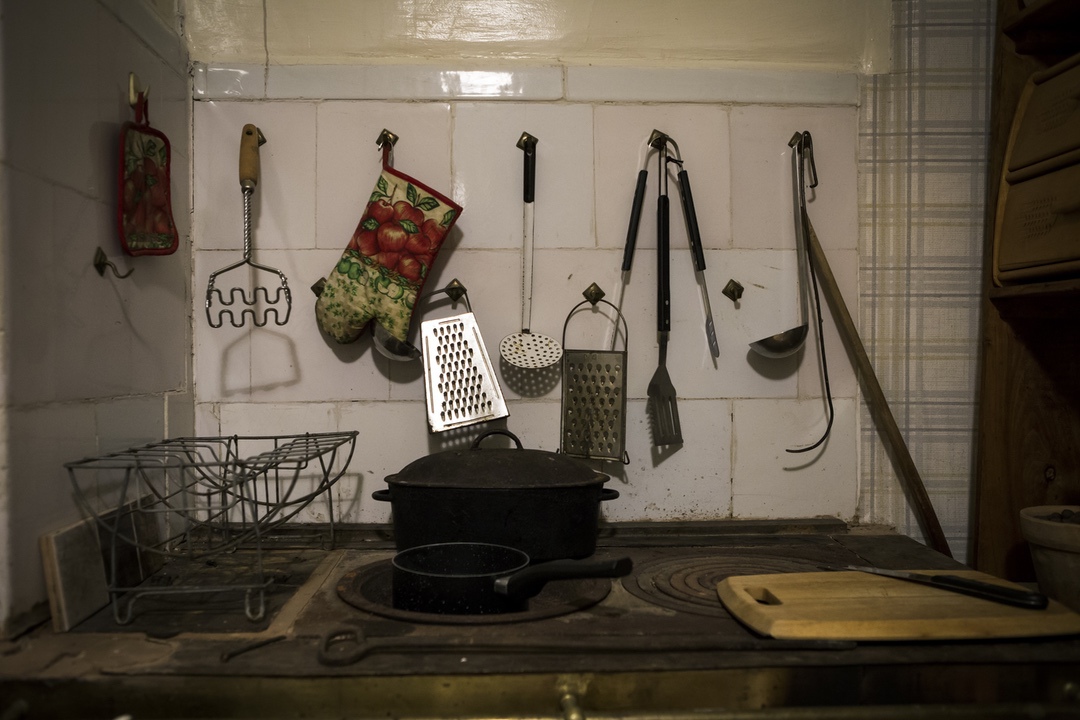
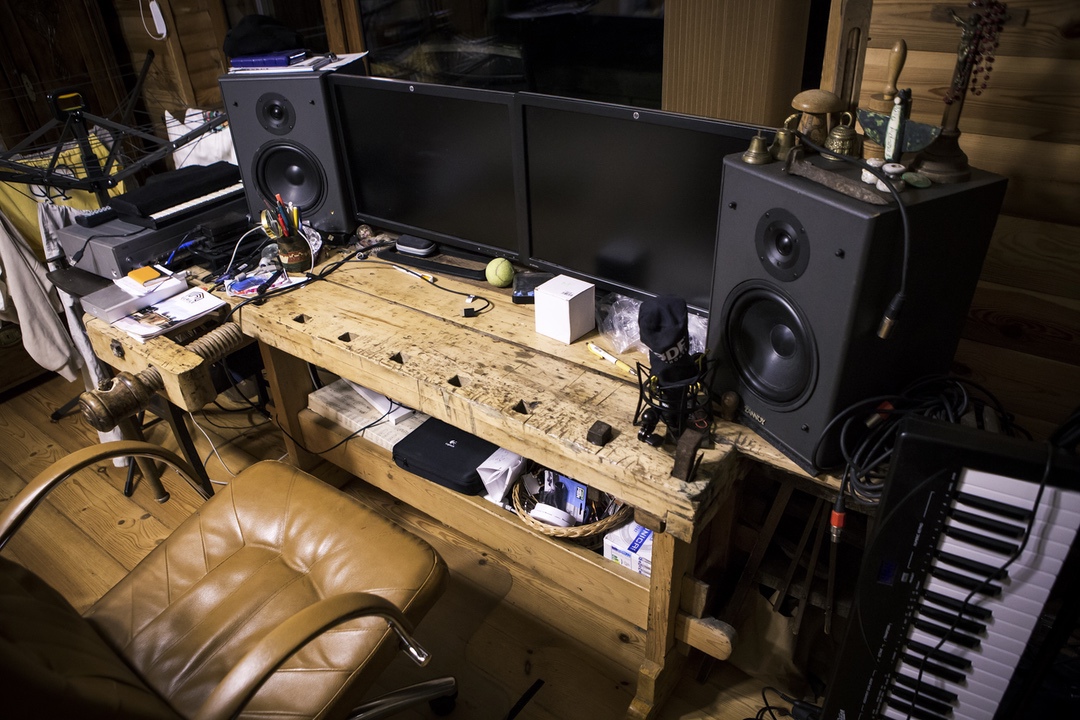

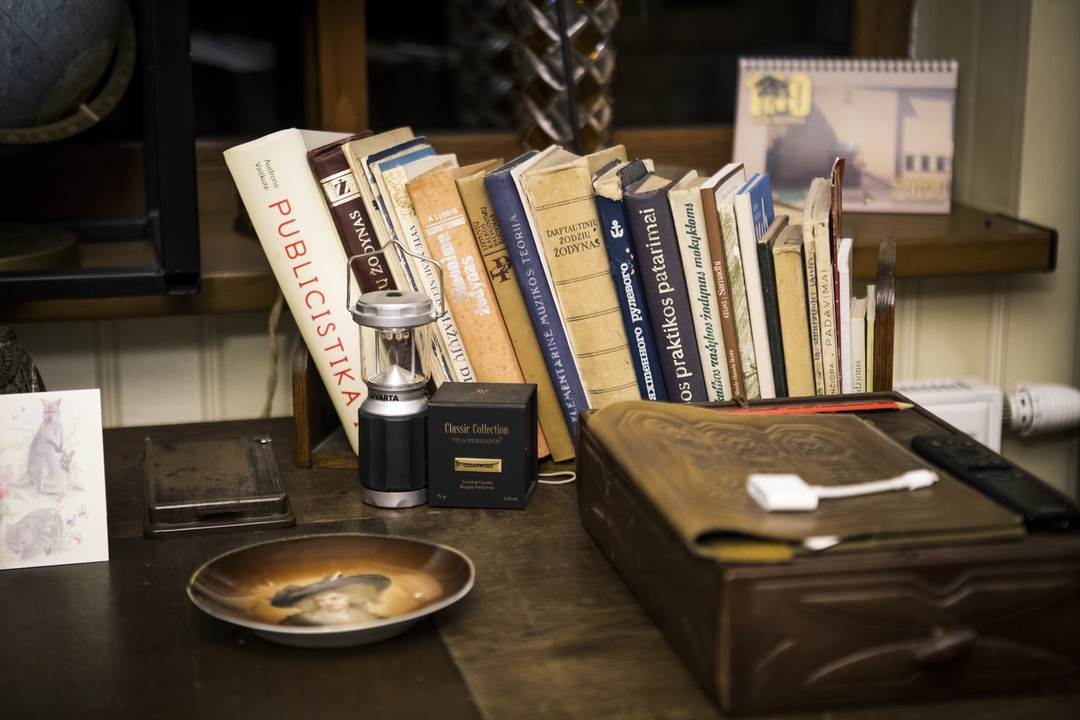
“I’m the fourth generation here. My children, the fifth generation, also grew up here. This house has seen it all, with countless stories worthy of separate books. So, saying goodbye or leaving such a treasure would not make sense. Memories must be preserved.” I nod vigorously in agreement with Gediminas.
The homestead-type house and plot, which has received the honorary title of Šančiai Cultural Courtyard, have already been mentioned in the press several times. This space has become a symbol of the community thanks to the events held here, where well-known Lithuanian musicians perform.
Like many other small wooden houses of Kaunas (and Lithuania), this particular one emerged here after the interwar period land reform, when the estates, which had been devastated by wars and progress, were divided among the volunteer soldiers, landless and small property-owning Lithuanians. The great-grandfather of G. Zujus moved here in 1919 after serving in the army.
At that time there was nothing here, only swamps and fields and one house further away. The house, built by the great-grandparents’ hands, was the second house in the newly emerging Aukštieji Šančiai district. It is now the oldest original surviving structure, as the original neighbors’ house further down on Servitutų Street has long since been rebuilt and changed its original appearance.
“We tried to preserve the authenticity. The only significant change is the slightly widened windows. I tried to preserve everything the best I could during the renovation, and so did my grandmother. She was very tidy: she was very protective of Lithuanian furniture throughout the Soviet era, explaining to us what could be cleaned with water, and what should be dry cleaned or waxed. That desire to maintain authenticity was instilled in me as well,” the composer shares.
Activeness is passed from generation to generation
“The fireplace, the history, and Kaunas’ nature are what draws me home. But other things too, especially the community. It’s also passed down from one generation to the next – both my mother and my grandfather were active. He was even a member of the community council. He led the construction of the Šančiai church (the Sacred Heart of Jesus Church in Kaunas) and was the benefactor of its organ. The organ is still there, though unfortunately somewhat neglected. I asked church officials to give me at least a keyboard if they were going to tear it down, but they said they would definitely restore it one day,” the Kaunas resident continues.
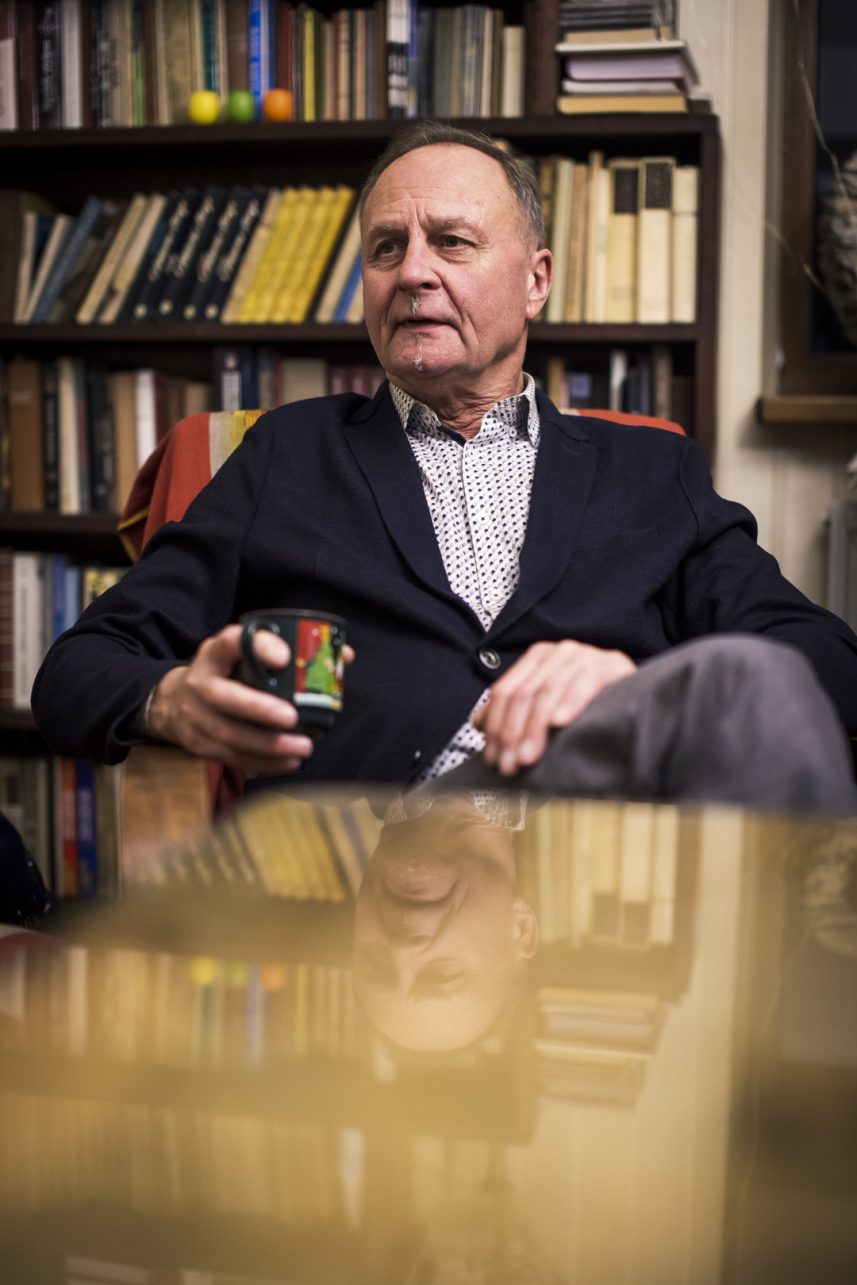
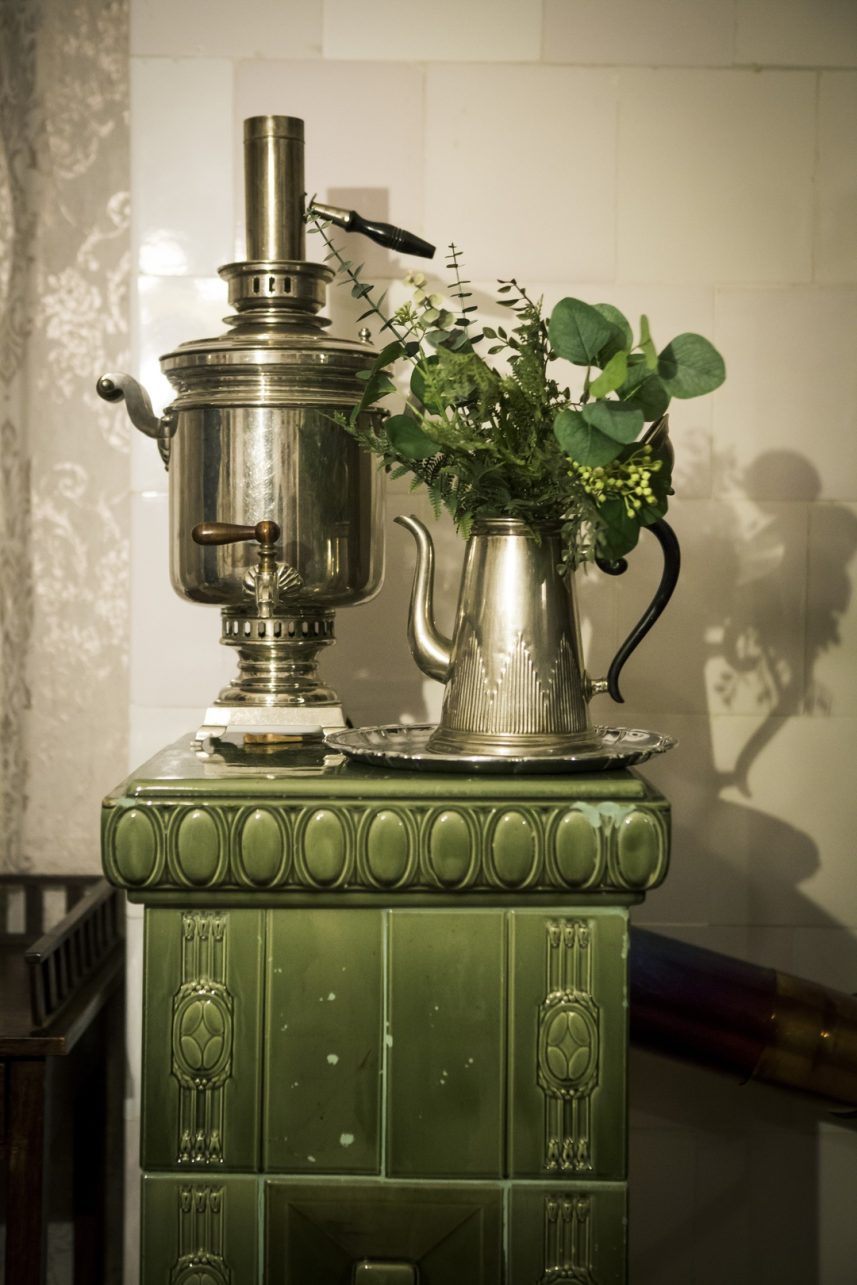
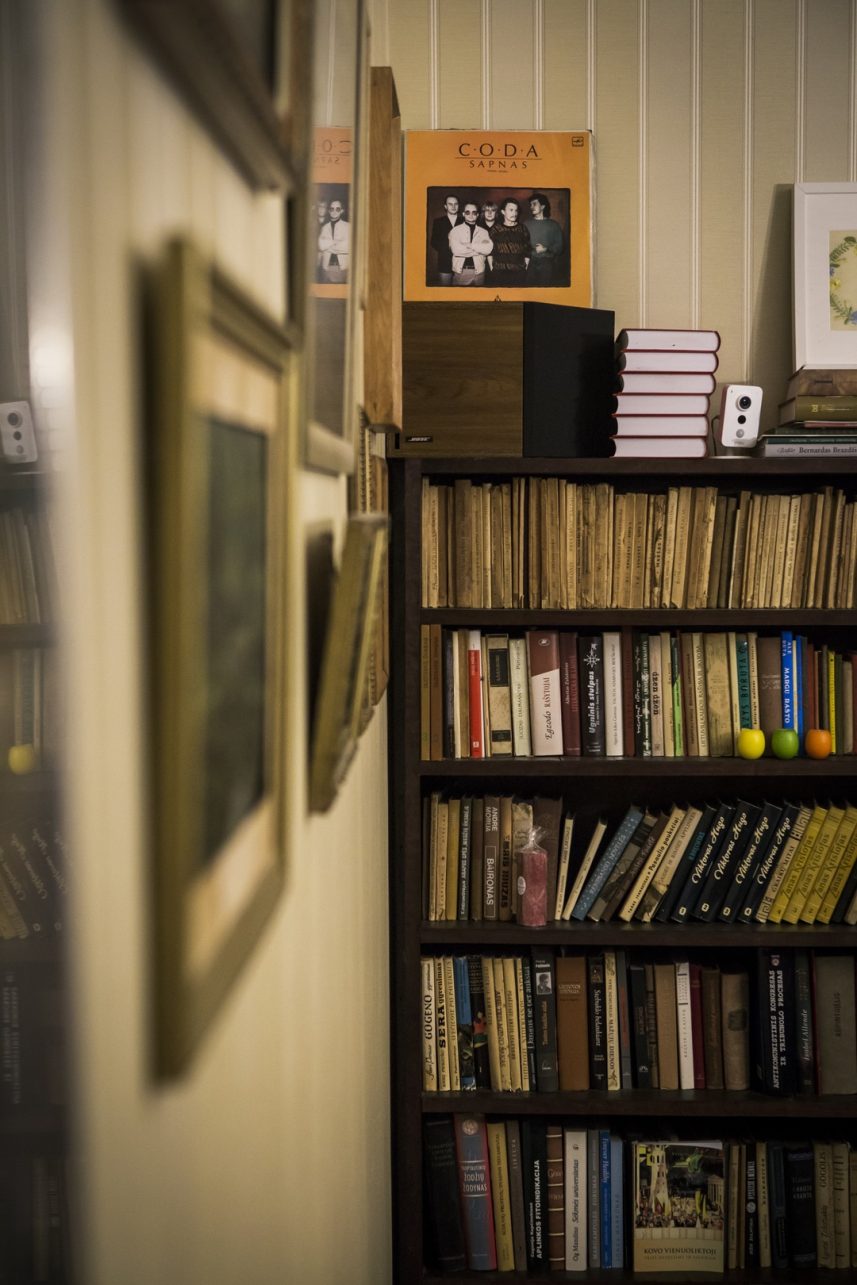
In addition, G. Zujus’ grandfather was involved in the establishment of the local chapter of the M. Valančius Society (Lithuanian Catholic Sobriety Society). His grandmother was equally active: she was awarded a number of medals and prizes for her active charity work at the Red Cross, where she worked as a secretary. As he says, this position was even more important than that of a manager: chairmen changed and secretaries stayed, ensuring the stability of the organization.
“Well, the story, of course, gets sadder with the arrival of Russians. My grandmother got a “travel voucher” to Siberia. The soldiers took everything away, all the medals, all the orders. My mother told me because she saw everything, she was at home, she was thirteen years old. They tore absolutely the whole house apart and took away everything that was useful. The children then ran to see their parents off at the Šančiai goods station. They said that everyone’s parents were sticking their hands through the bars to the crying children in the neighborhood. However, I am glad that they managed to return from the exile.”
There are many more stories in this house: zealous Catholics took care of a Jewish person during the German occupation in this very house. A painting near the entrance – painted by the same man and preserved to this day – reminds us of how much can fit between a few simple wooden walls.
What is the Šančiai community like?
Servitutų Street is hidden on the slope between Aukštieji and Žemieji Šančiai. The musician jokes that this is probably the most convenient place to gather community activists from both sides.
“In addition to my musical colleagues, the nearby residents, the elder, and the chairwoman gather here to discuss different issues. We communicate beautifully, maintain friendships, make decisions, and analyze projects – whether it’s about the famous Šančiai riverside street, Ąžuolynas Park, or parking lots,” he explains. The current active community, brought together by artists Vita Gelūnienė and Ed Carroll, has been around for just over 10 years. Gediminas even hosted the community’s anniversary celebration.
There is no shortage of parties
Of course, when we talk about the community, we also come to what has recently made this courtyard the most famous and earned it the title of Šančiai Cultural Courtyard – a list of concerts featuring well-known artists, musicians, and singers that could compete with serious Lithuanian festivals.
We sit down to watch video material from the events that took place here. In the background, through the window, I can see the stage on which Stepas Januška, Petras Vyšniauskas, Arvydas Joffė, Pranas Grišmanauskas, the Kaunas String Quartet, Veronika Povilionienė, Merūnas Vitulskis, Asta Pylipaitė, Edmundas Kučinskas, Egidijus Sipavičius, Kastytis Kerbedis, and countless others, whom I find it more difficult to recognize, have performed in the summer.
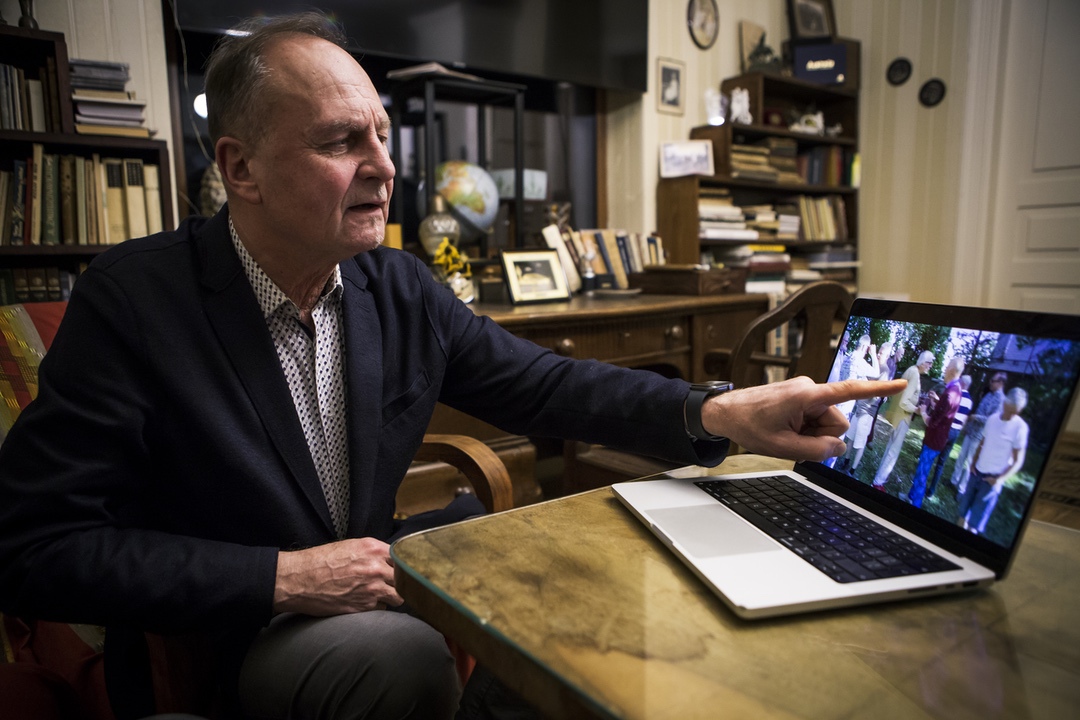
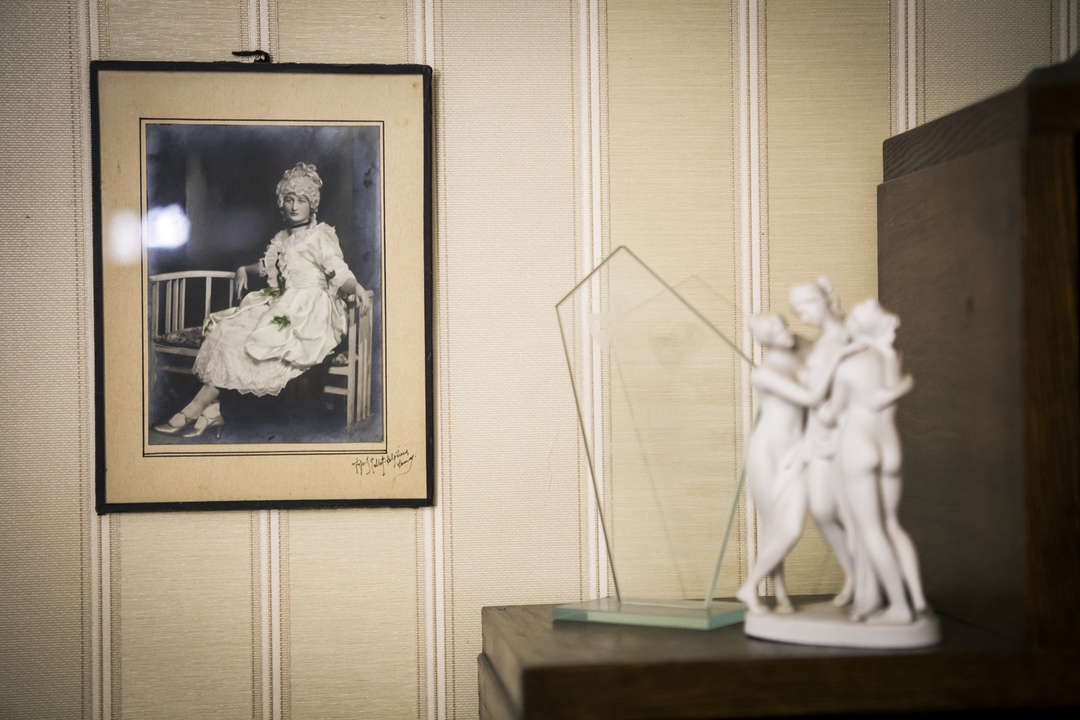
How is it possible? A mere mortal couldn’t gather such a crowd. “Of course, in all my years in the music world, on television, in recording studios, in academic work, I have met many of the country’s most famous artists. They like it here, it’s different, it’s cozy. It’s a celebration for us, for the Šančiai community, and the people of Kaunas.”
In addition, performances are also shown here, for example, S. Čėpla’s Taikos diena, as well as films, like Jonas and Adolfas Mekas Reminiscences of a Journey to Lithuania. There is also entertainment for the little ones. We hosted Saulė Degutytė’s play Eglė the Queen of Serpents.
The Mohican of Music
If the saying that you get to know a person by his friends really means anything, then it is easy to understand why Gediminas Zujus is called the Mohican of Lithuanian music. Among his achievements is the first private professional recording studio in Lithuania.
“After earning money from our first recordings and buying our first foreign instruments, we started to build a studio in Kaunas, in the Old Town. It may not have had an official name, but we called it MA Studio for a while. It stood for Midi Audio,” G. Zujus continues.
If you are interested in music and grew up in Kaunas, you will probably have heard this name, but for me, during the conversation, the memories just came flooding back. For my generation, Midi Audio was the gateway to the world of music performance: it was here that I bought my first instrument and my first drumsticks. For nearly everyone I know it was the only place where you could touch, try out, and discuss equipment before purchasing it, during a time when everything was available, but still in a much shorter supply.
Gediminas Zujus not only made but continues to make a big impact in the Lithuanian music world and beyond. In the small microcosm of Šančiai and around the big globe. As I walked toward Servitutų Street, I never would have guessed that this man’s work had influenced me too – someone who came from the subcultures and never really accomplished much as a musician. But that’s the beauty of this city: a trip to Šančiai can lead you to meet not only the greats but also – as he himself put it – the dinosaurs.
